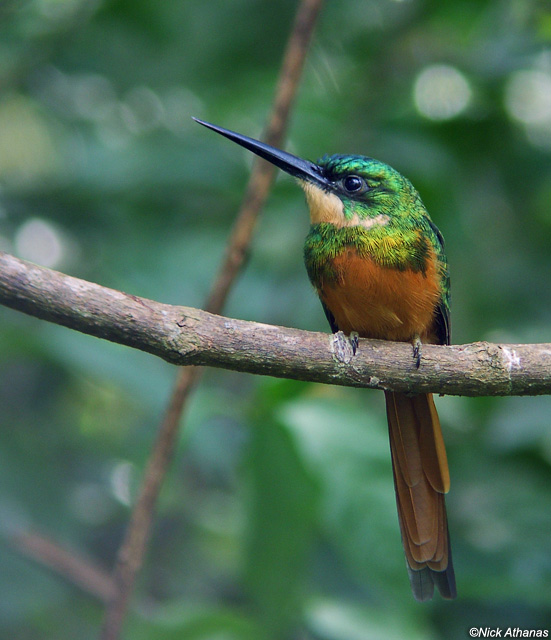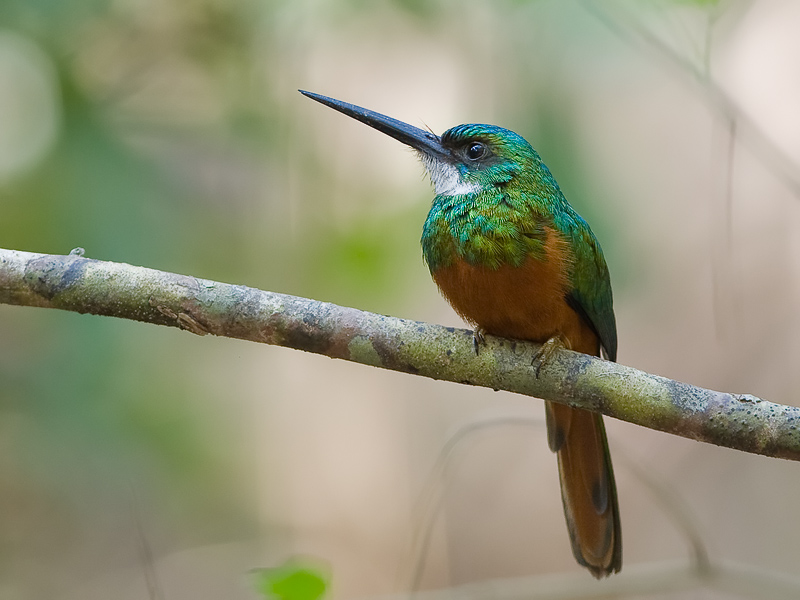
Galbula ruficauda
TAXONOMY
Galbula ruficauda Baron Cuvier, 1816.
OTHER COMMON NAMES
French: Jacamar а queue rousse; German: Rotschwanz-
Glanzvogel; Spanish: Jacamar Comъn.
PHYSICAL CHARACTERISTICS
9 in (23 cm); 2 in (51 mm) slender bill. Metallic green upper
parts, white or buff patch on throat, rufous or reddish underside.
DISTRIBUTION
Very common from southern Mexico to northern Argentina,
including Brazil, Colombia, and Ecuador. Also found in
Trinidad and Tobago.
HABITAT
Forest edge, woodland, thickets, and near streams and rivers.
BEHAVIOR
Live in pairs, prefer to hunt from low shrubbery.
FEEDING ECOLOGY AND DIET
Prefers flying insects, like most jacamars. Catches prey in midair
and batters it against a branch before consuming it.
REPRODUCTIVE BIOLOGY
Lays one to four white eggs in ground-hole nest cavity. Incubation
is 20–23 days. Chicks emerge from nest after 21–26
days. Both sexes incubate, and care for chicks.
CONSERVATION STATUS
Not threatened; widespread and common, adapts to many different
habitats.
SIGNIFICANCE TO HUMANS
None known.
Photo Gallery of - Rufous-tailed jacamar




 Animalia Life
Animalia Life